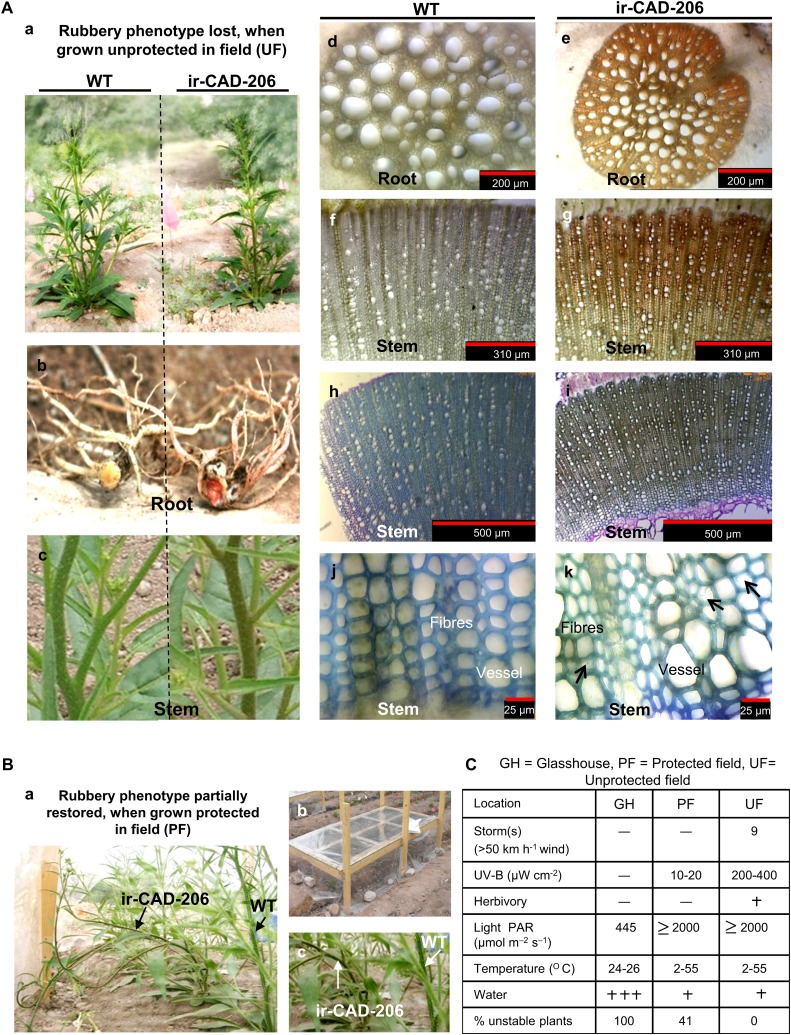Figure 3.
Rubbery, structurally unstable GH-grown ir-CAD plants acquire the stability of wild-type (WT) plants when grown in a field plot in their native environment of the Great Basin Desert. Aa, Structurally stable ir-CAD plants grown in a UF environment. Ab and Ac, Both UF wild-type and UF ir-CAD plants exhibited similar stem architecture. Wild-type plants had light brown roots (Ab) and bright green stems (Ac). Ad to Ag, Relative to the control plants (transverse section: root xylem [Ad], stem xylem [Af]), UF ir-CAD plants had red xylem both in roots (intact [Ab], transverse section [Ae]) and stems (intact [Ac], xylem cross-section [Ag]). Ah to Ak, Toluidine blue O dye stained UF wild-type and UF ir-CAD stems in xylem cross-section. UF wild-type plants had highly lignified xylem with thick-walled elements (vessels and fibers), as depicted from histochemical staining, whereas ir-CAD plants had lignified xylem with occasionally collapsed elements and disorganized walls indicated by black arrows (Ak). Ba, The rubbery phenotype of ir-CAD plants is partially restored when UF-grown plants are protected from wind, UV-B, and herbivore exposure. Bb, Experimental design of PF plants that were grown under a canopy of UV-B-opaque plastic (to eliminate UV-B exposure and wind-associated thigmomorphogenic effects) and were sprayed with a systemic insecticide (to minimize herbivory-induced responses). Bc, ir-CAD plants retained the color and rubbery phenotypes of GH ir-CAD plants when grown under PF conditions. C, Summary of stresses that plants faced in GH, PF, and UF growth environments.

